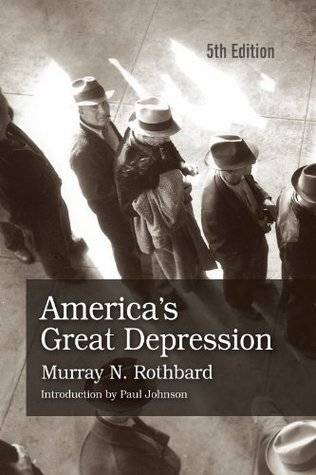

America's Great Depression
by Murray N. Rothbard
Applied Austrian economics doesn't get better than this.Murray N. Rothbard's America's Great Depression is a staple of moderneconomic literature and crucial for understanding a pivotal event inAmerican and world history. The Mises Institute edition features a new introduction by historian PaulJohnson.Since it first appeared in 1963, it has been the definitive treatment of thecauses of the depression. The book remains canonical today because thedebate is still very alive.Rothbard opens with a theoretical treatment of business cycle theory,showing how an expansive monetary policy generates imbalances betweeninvestment and consumption. He proceeds to examine the Fed's policies of the1920s, demonstrating that it was quite inflationary even if the effects didnot show up in the price of goods and services. He showed that the stockmarket correction was merely one symptom of the investment boom that ledinevitably to a bust.The Great Depression was not a crisis for capitalism but merely an exampleof the downturn part of the business cycle, which in turn was generated bygovernment intervention in the economy. Had the book appeared in the 1940s,it might have spared the world much grief. Even so, its appearance in 1963meant that free-market advocates had their first full-scale treatment ofthis crucial subject. The damage to the intellectual world inflicted byKeynesian- and socialist-style treatments would be limited from that dayforward.
Release Date:
June 14, 2000

